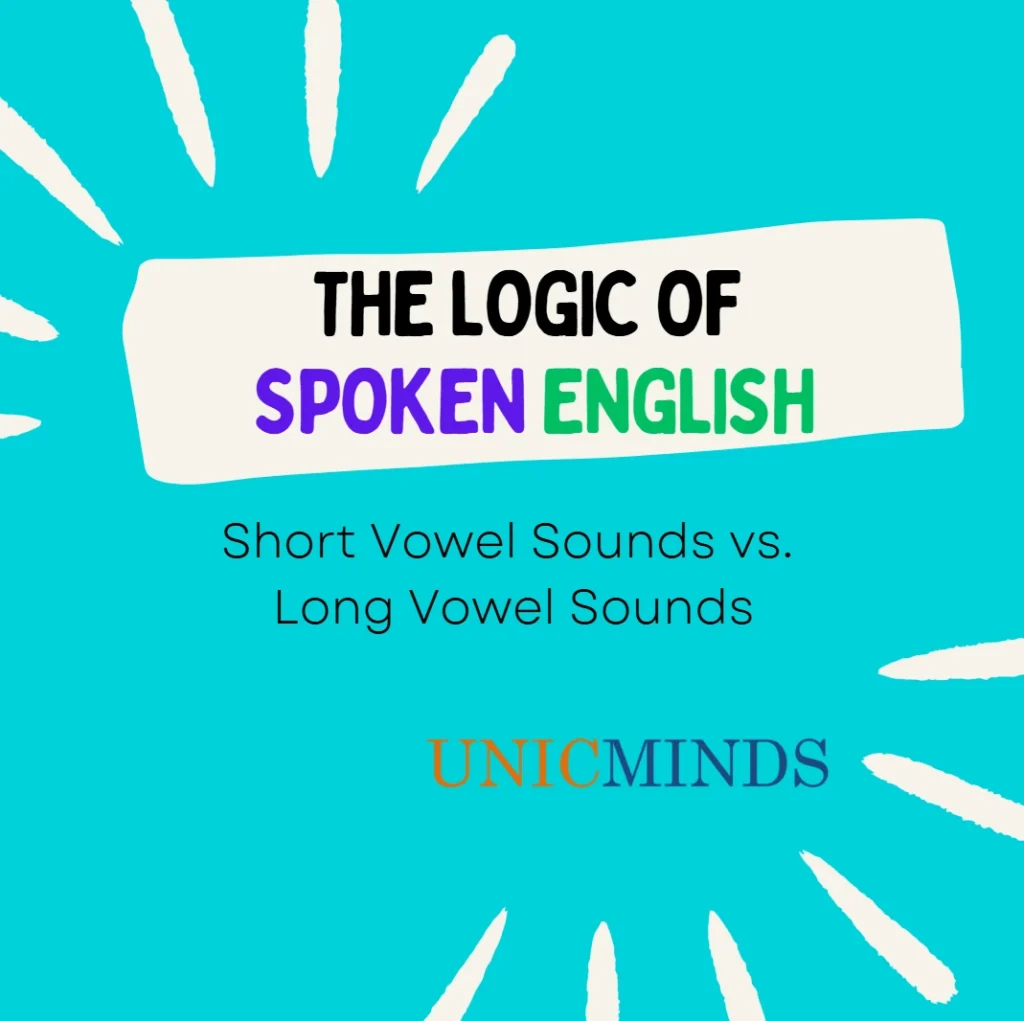English has five vowels, and we all know them – a, e, i, o, u. However, what many people don’t know is that English actually has 20 vowel sounds. This means these vowels are pronounced in twenty different ways depending on certain rules. We will cover some of those sounds in this article, which will reveal why we pronounce “fat” and “fate” so differently in English. Yes, there is a logic to it.
English has 20 vowel sounds. Short vowels in the IPA are /ɪ/-pit, /e/-pet, /æ/-pat, /ʌ/-cut, /ʊ/-put, /ɒ/-dog, /ə/-about. Long vowels in the IPA are /i:/-week, /ɑ:/-hard,/ɔ:/-fork,/ɜ:/-heard, /u:/-boot. Diphthong vowels in the IPA are /eɪ/-place, /oʊ/-home, /aʊ/-mouse, /ɪə/-clear, /eə/-care, /ɔɪ/-boy, /aɪ/-find, /ʊə/-tour.
These twenty sounds are categorized into two groups: monophthongs and diphthongs. A monophthong is when there is only one vowel sound in a syllable. A diphthong is the combination of two vowel sounds together.
To begin learning in a step by step manner, let’s understand first that each of the vowels make at least two sounds – the short one and the long one. They can also be silent sometimes. The sound the vowel makes depends on its position in the word and the letters that surround it.
Vowel Sounds Rule Number 1:
When a word has only one vowel and ends with a consonant, the vowel makes a short sound.
‘a’ in ‘jam’
‘e’ in ‘west’
‘o’ in ‘hot’
‘i’ in ‘fish’
‘u’ in ‘cup’
Vowel Sounds Rule Number 2:
When a word has two vowels separated by two or more letters, the first vowel makes a short sound.
as in ‘apple’
as in ‘octopus’
as in ‘basket’
as in ‘elephant’
as in ‘umbrella’
Vowel Sounds Rule Number 3:
When a word ends with the letter ‘e’ (magic ‘e’/ silent ‘e’), the first vowel makes a long sound.
‘cap’ becomes ‘cape’
‘kit’ becomes ‘kite’
‘tub’ becomes ‘tube’
as in ‘game’
as in ‘time’
Vowel Sounds Rule Number 4:
When a word has two vowels next to each other, the first vowel makes a long sound and the second vowel remains silent.
as in ‘tie’
as in ‘boat’
as in ‘rain’
as in ‘value’
as in ‘feet’
Symbols denoting short and long vowel pronunciation
It is useful to place a mark on top of the vowels. It indicates the vowel sound to be used. For instance, a short vowel sound is indicated by a curved symbol above the vowel-like ‘ă’ in ‘măn’. While a long vowel sound is represented by a small horizontal line above it, like ‘ā’ in ‘māin’. Such symbols will reinforce your kid’s ability to recognize and use the appropriate vowel sound effectively.
Examples for Pronunciation Practice:
Aa
‘fat’, ‘map’, ‘hand’, ‘lamp’, ‘glass’
‘fate’, ‘pain’, ‘game’, ‘mail’, ‘whale’
Ee
‘egg’, ‘red’, ‘nest’, ‘bell’, ‘smell’
‘ear’, ‘sea’, ‘heal’, ‘weak’, ‘three’
Ii
‘pig’, ‘rib’, ‘fist’, ‘milk’, ‘swim’
‘hide’, ‘tile’, ‘lime’, ‘wipe’, ‘prize’
Oo
‘fox’, ‘hop’, ‘rod’, ‘drop’, ‘pond’
‘road’, ‘goat’, ‘bone’, ‘note’, ‘roast’
Uu
‘bud’, ‘gun’, ‘hug’, ‘dump’, ‘puff’
‘rule’, ‘true’, ‘dune’, ‘flute’, ‘fruit
Hope this helped provide you some foundational information in English pronunciation. Thank you for reading.
You may like to read: Developing Leisure Reading in Children, Respect Multiple Intelligences, & English Essentials for All




